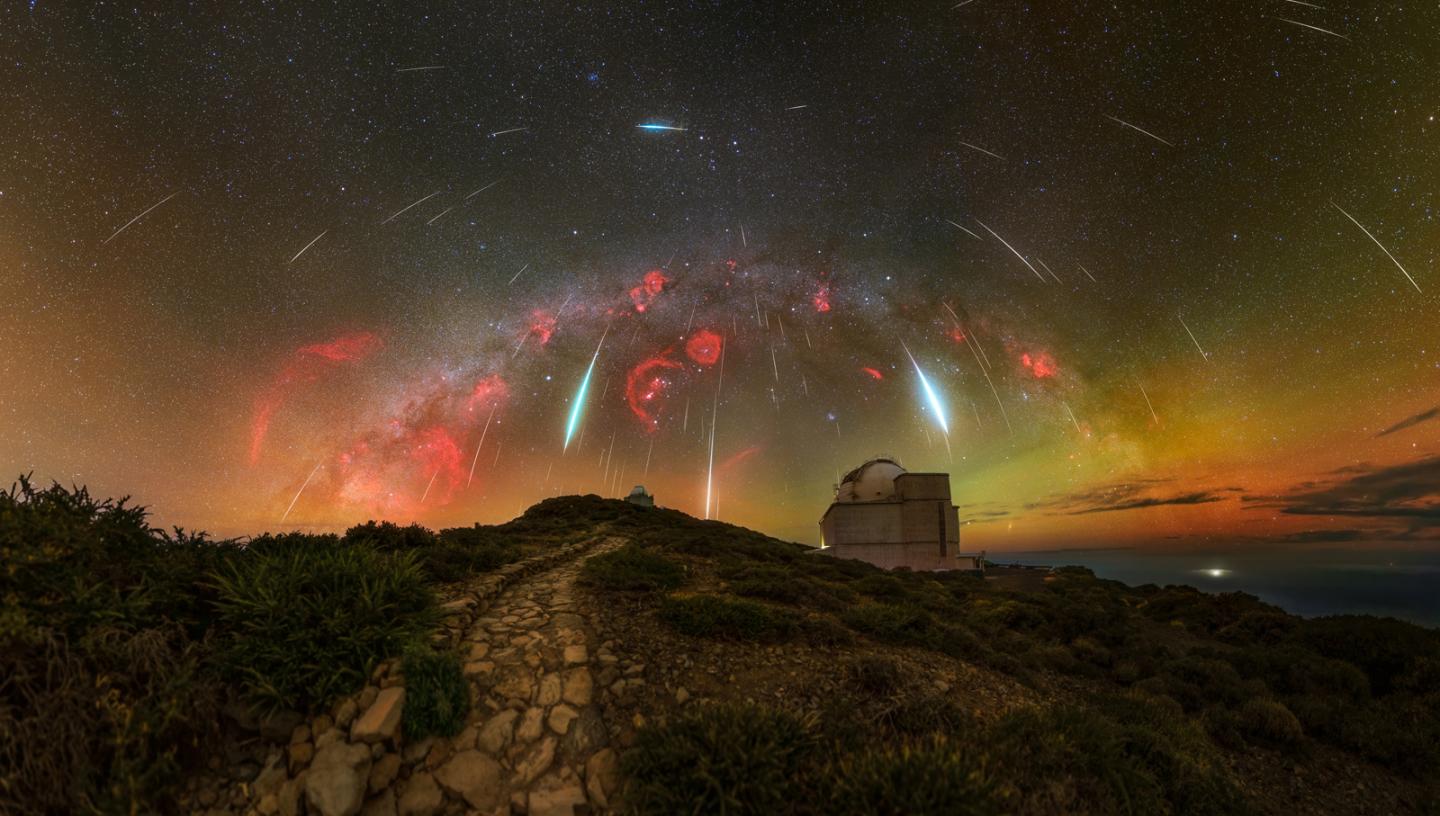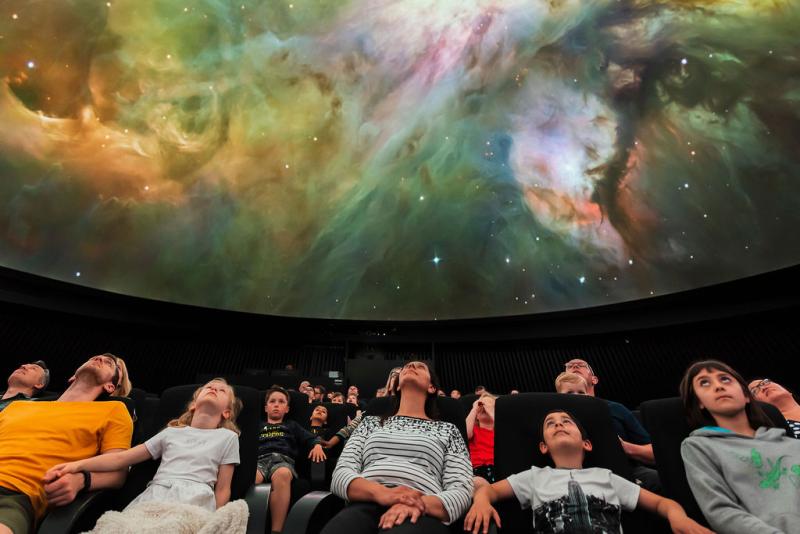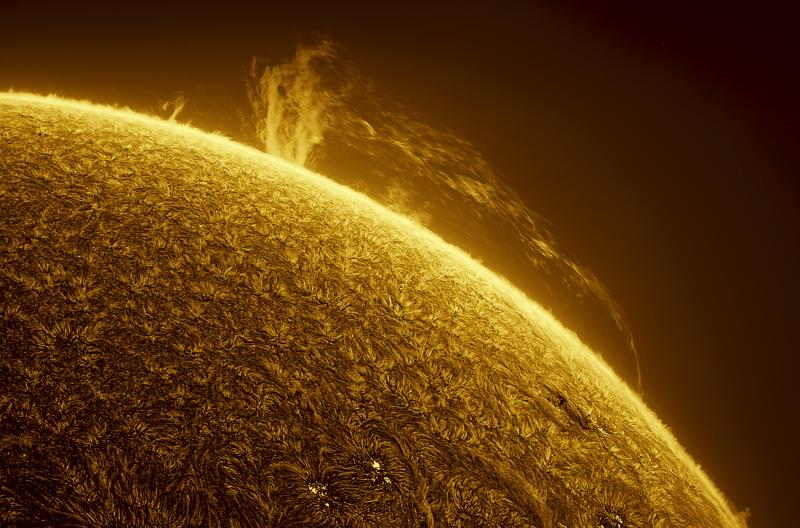
There are several spectacular opportunities to see meteor showers in the UK throughout the year.
The table below includes dates for all the major meteor showers visible in the UK. Each entry includes the shower name, the date of 'maximum' - when activity peaks - and the normal limits of when each meteor shower is visible.
The rate per hour gives some idea of how many meteors you can expect to see under optimum conditions, while the description gives some more detail about each meteor shower.
Click the links to find more information about all the meteor showers listed, and get more advice about what to see in the night sky with the Royal Observatory Greenwich's monthly astronomy blog.
Never miss a shooting star
Sign up to our space newsletter for exclusive astronomy highlights, night sky guides and out-of-this-world events.
Meteor shower dates 2025
| Shower Name | Date of Maximum | Normal Limits | Possible hourly rate | Description |
| Quadrantids | 4 January | 26 Dec-12 Jan | 120 | Bluish- or yellowish-white meteors with fine trains |
| Lyrids | 22 April | 16-25 April | 18 | Bright fast meteors, some with trains. Associated with Comet Thatcher |
| Eta Aquariids | 5 May | 19 Apr-28 May | 40 | Low in sky. Associated with Comet Halley |
| Alpha Capricornids | 30 July | 3 July-15 Aug | 5 | Yellow slow fireballs |
| Delta Aquariids | 30 July | 12 July-23 Aug | 25 | Steady stream of meteors over several days but a low rate per hour |
| Perseids | 12 August | 17 July-24 Aug | 150 | Many bright fast meteors with trains. Associated with Comet Swift-Tuttle (1737, 1862, 1992) |
| Draconids | 8 October | 6-10 October | 10 | Associated with Comet 21/P Giacobini-Zimmer |
| Orionids | 22 October | 2 Oct-7 Nov | 15 | Fast with fine trains. Associated with Comet Halley |
| Taurids | Southern: 10 Oct Northern: 12 Nov | Southern: 10 Sep-20 Nov Northern: 20 Oct-10 Dec | 5 | Very slow meteors |
| Leonids | 17 November | 6-30 November | 15 | Fast bright meteors with fine trains. Associated with Comet Tempel-Tuttle |
| Geminids | 14 December | 4-20 December | 120 | Plenty of bright meteors, few trains |
| Ursids | 22 December | 17-26 December | 10 | Sparse shower. Associated with comet 8P/Tuttle |
What is a meteor?
What we are witnessing when we see a shooting star is a small piece of interplanetary matter, called a meteor, entering the Earth's atmosphere and 'burning up' at a height of about 100 km.
These small particles are moving very fast relative to the Earth and when they enter the Earth's atmosphere, they are completely evaporated and the air in the path of the meteor is ionised.
We see light from the emission of radiation from the ionised gas and from the white-hot evaporating particle. The trail is the hot gas gradually cooling down.
What is a meteor shower?
When the Earth encounters a number of these meteors at once, we call them 'meteor showers'. These are specific clouds of debris that originate from particular sources.
Every meteor shower has a progenitor Comet – the place where the debris cloud has come from.
A good example is Halley’s Comet which orbits the Sun every 76 years and is the 'progenitor' of the Orionids. As the Comet gets close to the Sun it heats up, and being a ball of mostly ice it starts to evaporate. Rather than becoming a liquid, it literally turns straight into a cloud of particles, just sublimes – a big cloud of debris.
As the comet goes around the Sun it is constantly filling its orbit with debris. If its orbit coincides with the Earth’s orbit then every year you’ll go through that cloud of debris. Those little pieces then burn up in the Earth’s atmosphere as we smash into them, creating meteor showers or shooting stars.
What is a meteor storm?
A meteor storm occurs when you go through a really unusually dense part of a comet’s debris cloud. It’s very unpredictable; you can’t really tell when it’s going to happen, but when it does it’s possible to see thousands of meteors per hour for one or two hours.
What are meteorites?
When larger chunks of interplanetary matter enter the atmosphere it is unlikely that the whole chunk will be evaporated. The outer layers will disappear, but the centre is likely to survive and will hit the ground as a meteorite. The speed with which small meteorites hit the ground can be around 500 km/h.
More than 2000 meteorites have been recovered. They are of different types: stony meteorites, iron meteorites and the rare carbonaceous chondrites.
What is the largest meteorite ever found?
The largest meteorite that has been found is the 60 tonne Hoba iron meteorite. The largest stony meteorite weighs about a tonne, and the Allende carbonaceous chondrite was a series of chunks that totalled about five tonnes.
One of the best-known impact craters is the Arizona crater in the USA, which is 1280 metres across and 180 metres deep. It was formed several thousand years ago by a 250,000 tonne meteorite with a diameter of 70 metres hitting the Earth at a speed of nearly 60,000 km/h.
What are the differences between meteors, meteoroids, and meteorites?
The names are so similar, it's easy to get mixed up between meteors, meteoroids, and meteorites. Our astronomers have created this video to help you understand what those terms mean and what's the difference.
The Perseids
The Perseids are one of the best-known meteor showers and can be seen every August. The radiant is in the constellation Perseus, just below the familiar 'W' of the constellation of Cassiopeia. At this time of year this can be seen reasonably high in the north-eastern sky at nightfall.
Find out more about the Perseid meteor shower
Sporadic meteors
If no prominent shower is active then most of the meteors that are seen will come from random directions in space. These meteors are called sporadic meteors and about one every ten minutes is the normal rate for them to be seen.
Most fire-balls and meteorites are sporadic meteors. The material in these meteors is associated with the material in the asteroids and it is likely that they represent material that has come from fragmented asteroids.
Main image: A Cosmic Firework: the Geminid Meteor Shower © Jakob Sahner – Astronomy Photographer of the Year 2024




